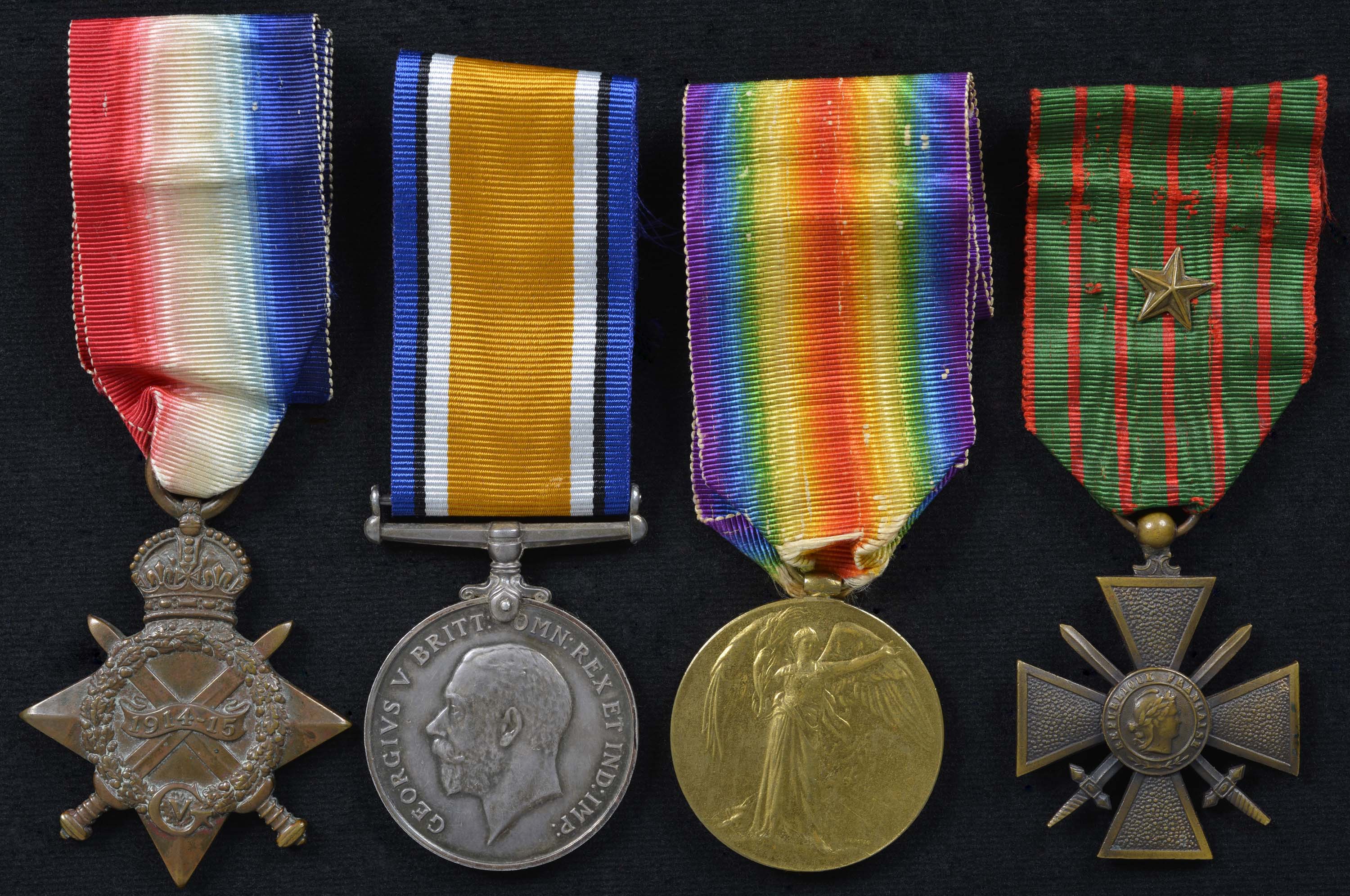

Display No. 12F
MCLAREN, James Hall
James McLaren joined the Royal Navy at the start of the First World War having previous experience as a trained shipwright. He served as a Shipwright with the Royal Navy Torpedo Flotillas. McLaren served in the North Sea, off the coast of Belgium and Northern France, as well as part of convoys crossing the Atlantic Ocean in HM Ships Marshal Ney, Thames, Arrogant, and Lancaster. The French Government awarded McLaren the Croix de Guerre for his bravery under fire when he was tasked to repair a gun emplacement on a torpedo boat, which was temporarily disabled while coming under heavy fire from enemy ships. He was discharged from service in 1919. McLaren immigrated to New Zealand with his wife in late 1920.
Awarded medal(s)
Medal Description [Left to Right]:
The 1914-1915 Star
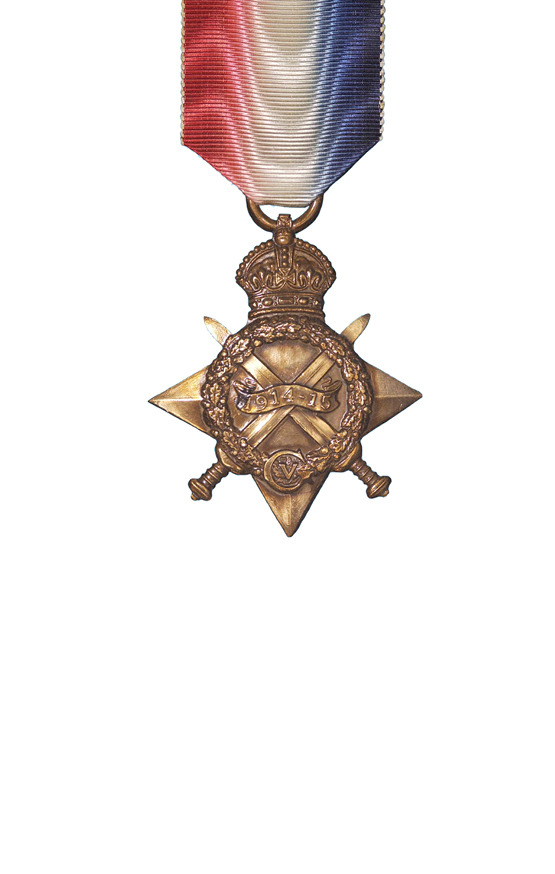
The 1914-15 Star was awarded to servicemen and servicewomen who served in the First World War between 5 August 1914 and 31 December 1915 in any “theatre of war”, provided they had not qualified for the 1914 Star. This included service at Gallipoli between 25 April 1915 and 31 December 1915, service in Egypt between 5 November 1914 and 31 December 1915, and service during the capture of German Samoa on 29 August 1914. Those eligible for the medal must have “served on the establishment of a unit in a theatre of war” during the relevant dates of operations in that area. The ribbon’s red, white and blue shaded and watered bands represent the flag of the United Kingdom.
The British War Medal
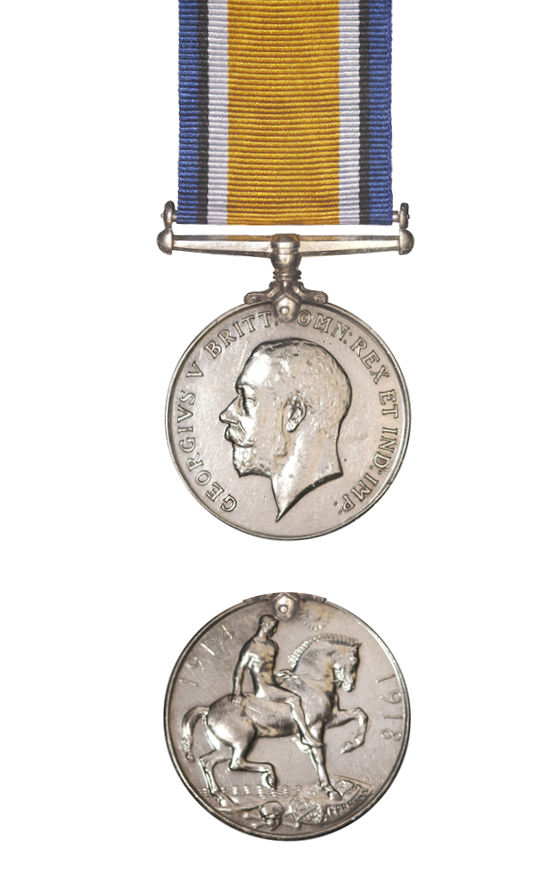
The British War Medal was instituted in 1919 to recognise the successful conclusion of the First World War (1914-1918). Its coverage was later extended to recognise service until 1920, recognising mine clearing operations at sea, and participation in operations in North and South Russia, the eastern Baltic, Siberia, the Black Sea and the Caspian Sea.
The Victory Medal
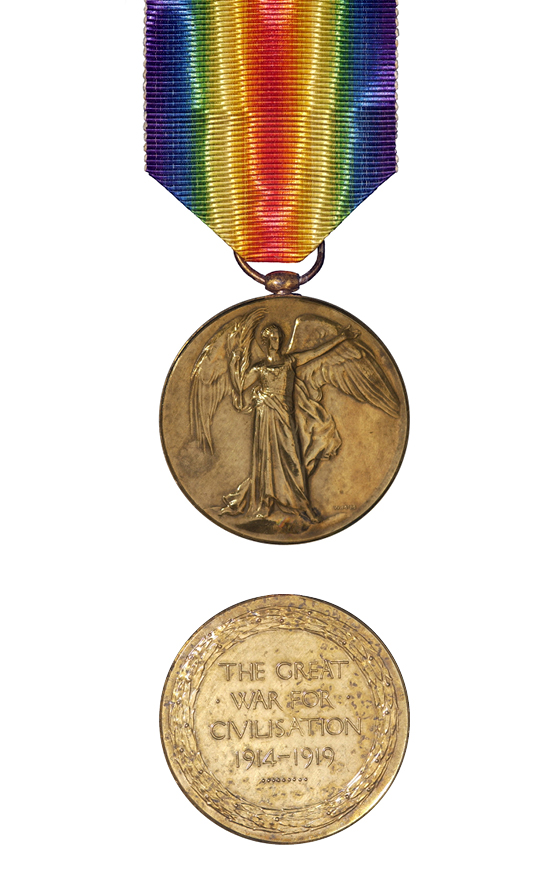
The Victory Medal was awarded in the First World War to all those who had already qualified for the 1914 Star or the 1914-15 Star, and to most persons who had already qualified for the British War Medal. The Victory Medal was awarded to all New Zealand troops serving overseas, except for those who arrived in Samoa after 30 August 1914 and those serving in Great Britain only. It has a unique double rainbow ribbon.
A bronze spray of oak leaves on the medal ribbon denotes that the recipient was Mentioned in Despatches during the period that the medal recognises. To be Mentioned in Despatches a member of the armed forces has had their name mentioned in an official report, written by a superior officer, and sent to a higher command. The report would describe the individual’s gallant or meritorious action in the face of the enemy.
Croix de Guerre (France)
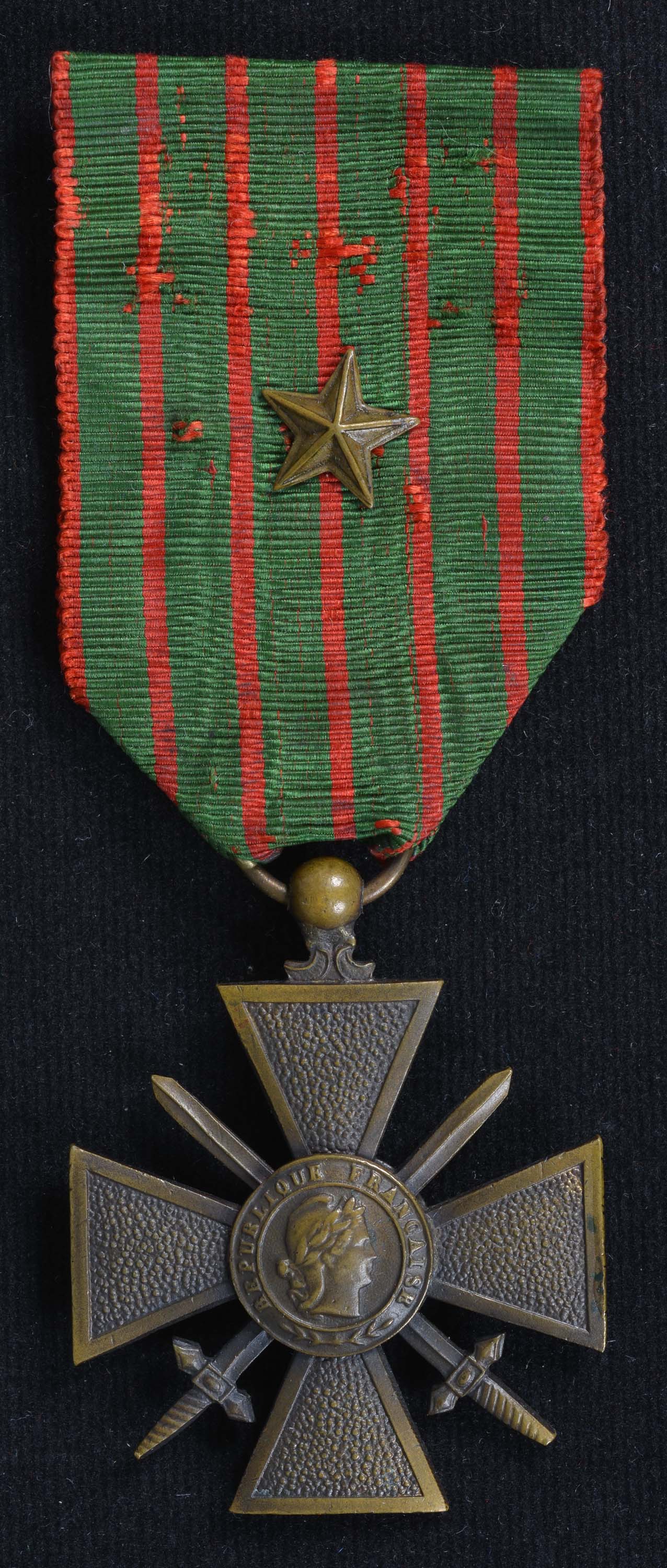
A French military decoration awarded during both the First and Second World Wars and in other conflicts. It may be awarded either as an individual award, or as a unit award to those soldiers who distinguish themselves by acts of heroism, involving combat with the enemy. The medal is awarded to those who have been ‘mentioned in despatches’, meaning a heroic deed or deeds were performed, meriting a citation from an individual’s headquarters unit.
A star or palm emblem in either bronze, silver, or gold would be attached to the ribbon indicating at what level the individual was recognised (i.e. regiment, division, corps, army). Please note this image of the medal includes a bronze star.

